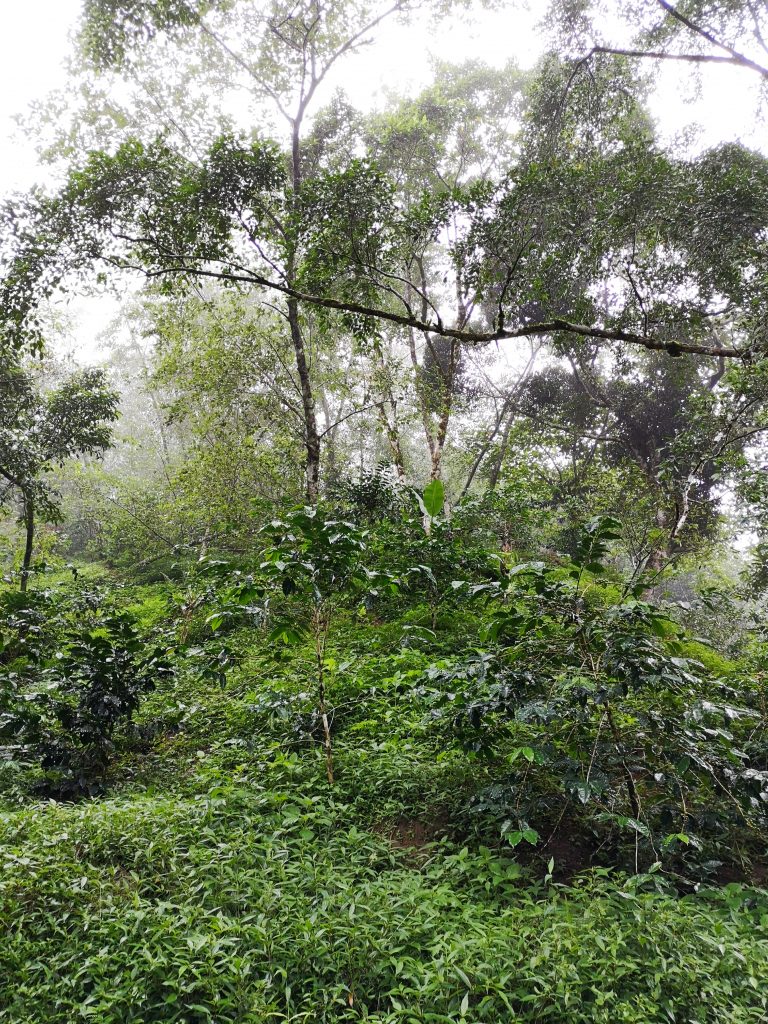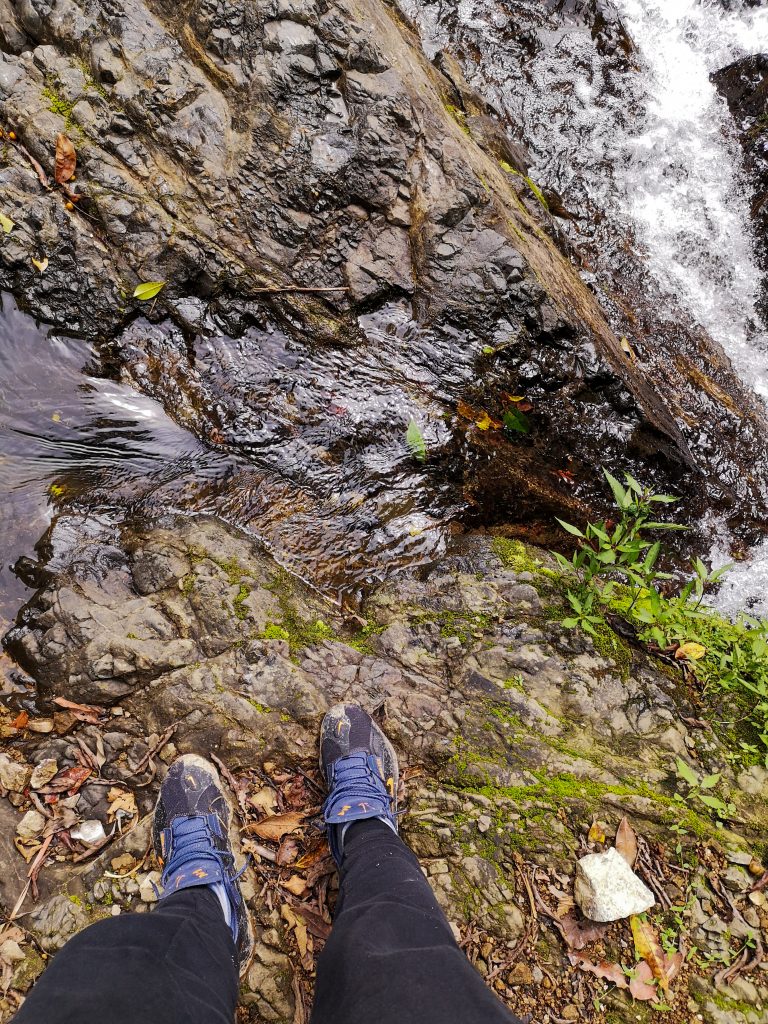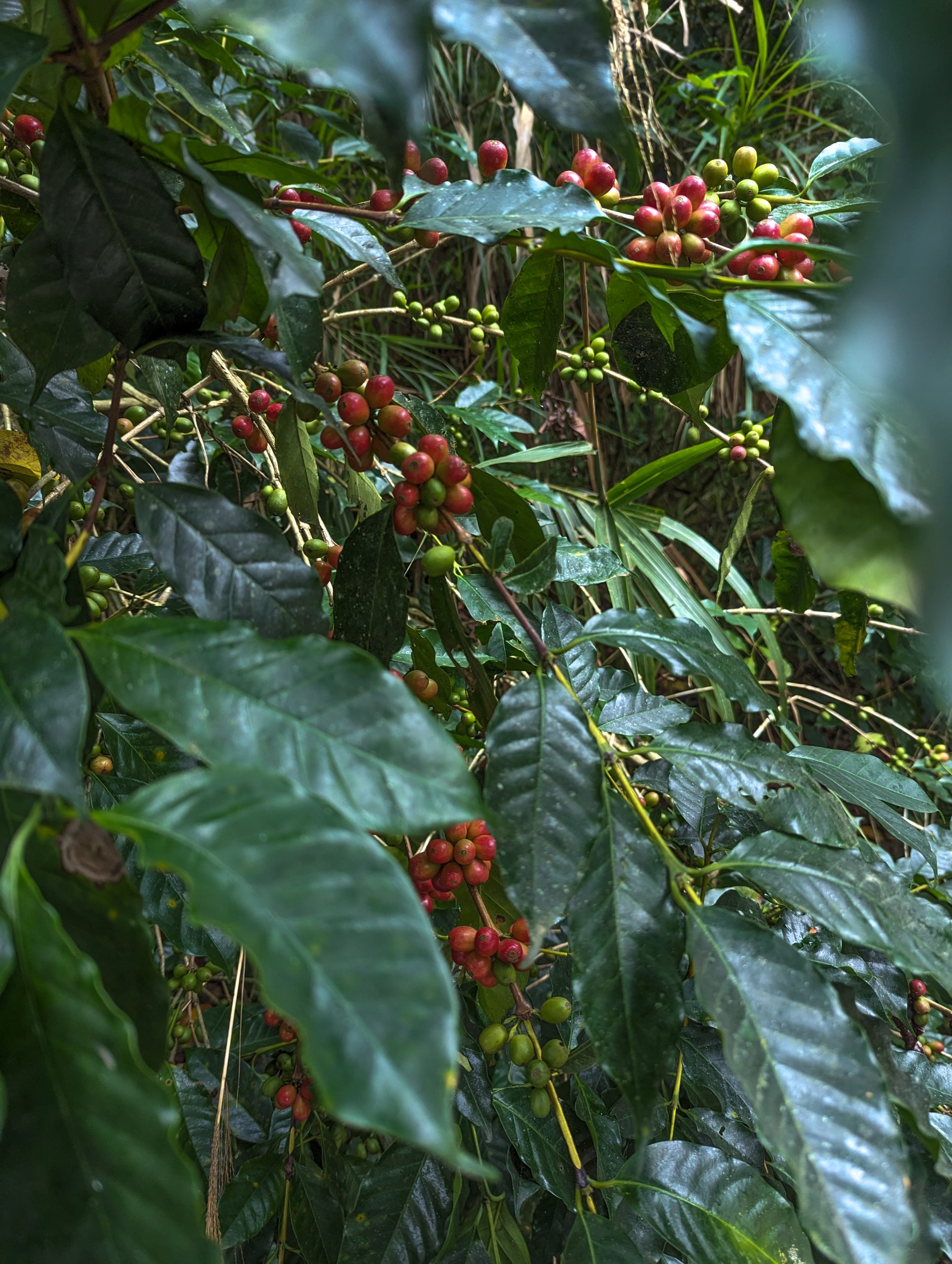This is part 1 of a 5-part series on Shade Grown, agroforsestry coffees.
Biodiversity as the Foundation of Rainforest Ecosystems
Rainforests hold the greatest concentration of biodiversity on Earth. Within even a small area, countless plants, insects, birds, and mammals coexist, each contributing to the balance that sustains the system. Coffee grown through agroforestry inside the rainforest is not an imitation of this complexity. It is one more layer within the forest, coexisting with the life around it. Farmers, like any other mammals in the forest, interact with the environment in ways that can either disrupt or harmonize with it. Agroforestry represents the choice to live in harmony, sustaining the diversity that already exists.

Coffee as a Participant in Rainforest Life
In this setting, coffee plants do not replace the forest. They share space beneath the canopy, forming part of the ecosystem’s structure. The surrounding trees, vines, and shrubs continue to provide food and shelter for wildlife, while coffee becomes another plant woven into the fabric of the rainforest.
Birds forage and nest in these environments, moving freely between wild and cultivated areas. Insects and pollinators benefit from the flowers of both forest trees and coffee plants, and their activity increases pollination and productivity. Mammals, reptiles, and amphibians also interact within this shared space, using the habitat in ways that support both their survival and the farm’s health.
Genetic Diversity and Ecological Stability
Diversity at every level makes rainforests resilient. When coffee is grown within them, it benefits from this built-in stability. A wide range of plant and animal species keeps pests and diseases in check. Natural variation among trees and plants prevents uniform vulnerability. Farmers working in this environment contribute to stability not by controlling the system from outside but by aligning their practices with the balance already in place.
In this way, farming does not weaken the forest. It participates in its resilience, reinforcing the natural checks and balances that keep the ecosystem strong.

Farming as Conservation
Agroforestry coffee inside rainforests is conservation in practice. Instead of clearing land and breaking apart habitats, farmers maintain the living forest and secure their livelihood within it. The result is intact canopy cover, continuous wildlife corridors, and a sustained environment where both human and non-human life coexist.
Certification systems can help highlight these benefits, but the ecological value exists regardless. Choosing coffee grown this way supports the preservation of rainforests not through imitation, but through direct participation in their survival.
Local and Global Implications
In the Philippines, where rainforests are biodiversity hotspots under threat from deforestation, this approach is especially significant. Agroforestry coffee sustains both livelihoods and ecosystems, protecting the species and habitats that would otherwise be lost. Globally, the biodiversity of rainforests contributes to climate regulation, water cycles, and ecosystem services that reach far beyond their borders. Farming within these forests strengthens those services rather than diminishing them.
Conclusion
Biodiversity is the foundation of rainforest health, and agroforestry coffee contributes to it from within. Farmers are part of the ecosystem, one species among many interacting with soil, water, plants, and animals. Coffee grown this way preserves habitats, strengthens ecological stability, and supports the web of life that makes rainforests irreplaceable. Each cup connects directly to a living system where humans and nature exist as one.
Thanks for reading. Come back to read part 2 in a few days, or see the entire 5-Part series outlined on the Coffee In Harmony Series Introduction. All of our research resources and scientific papers are linked in our Coffee Study Source Index.

